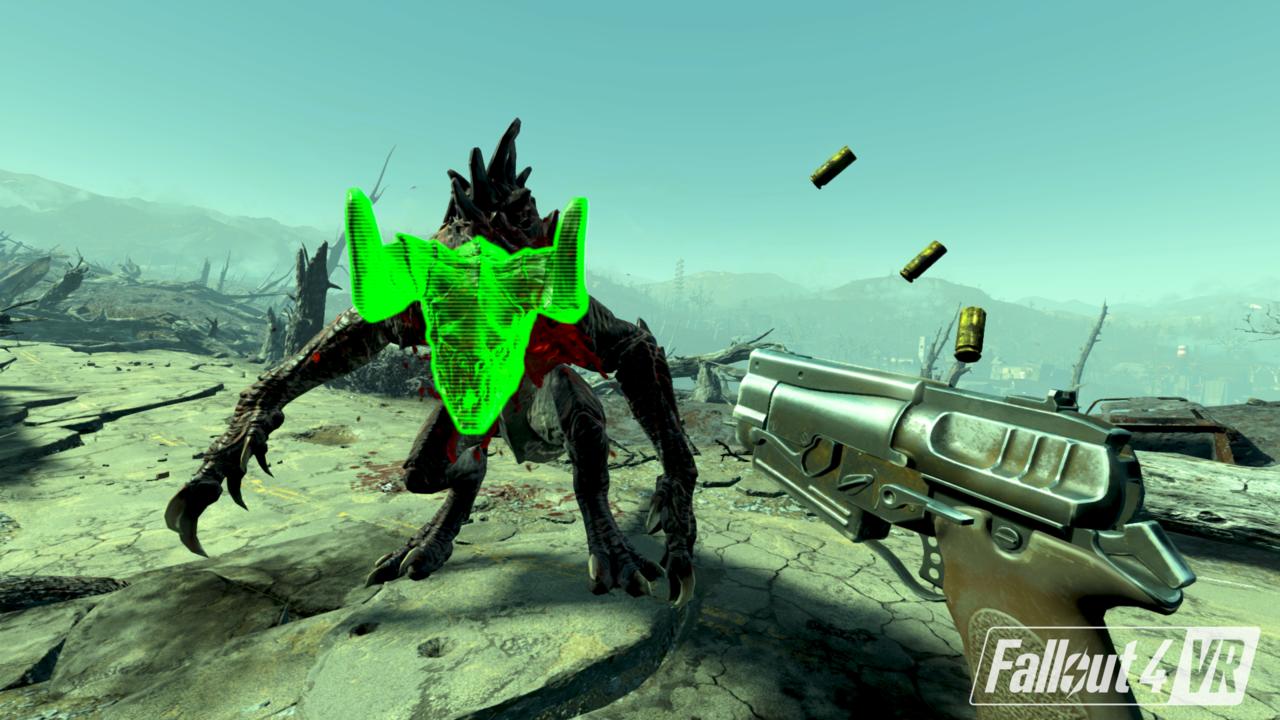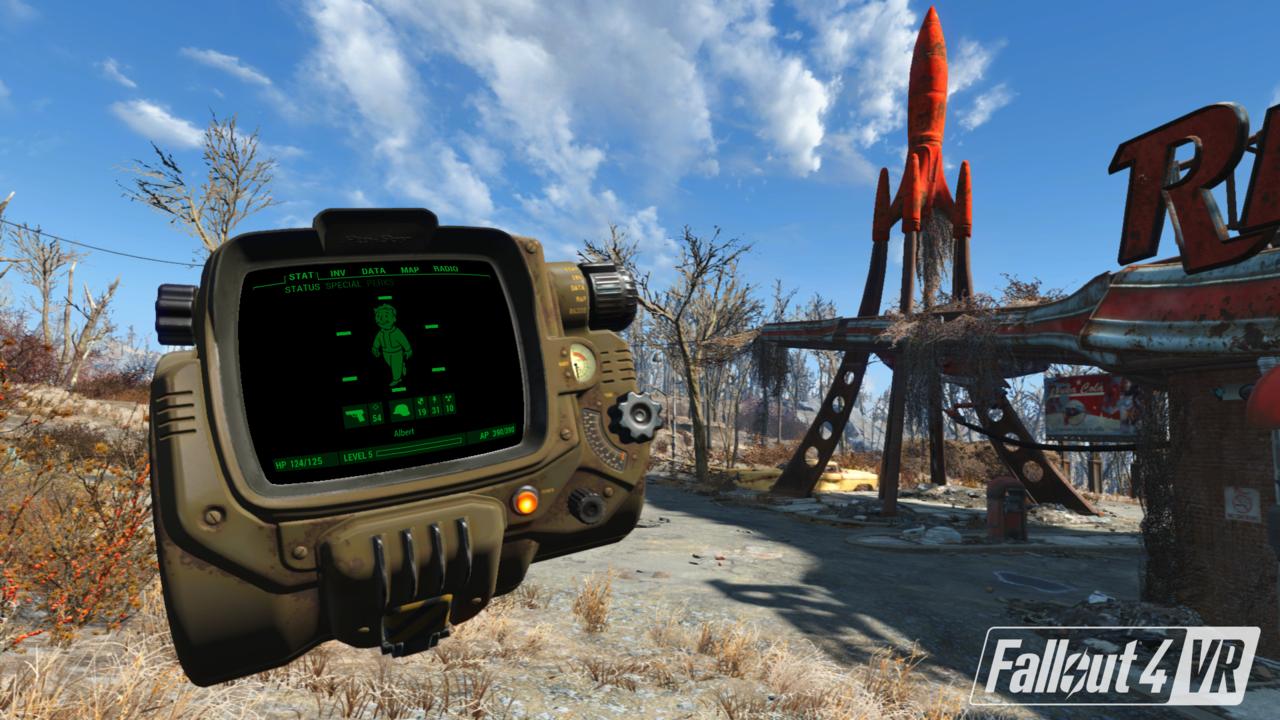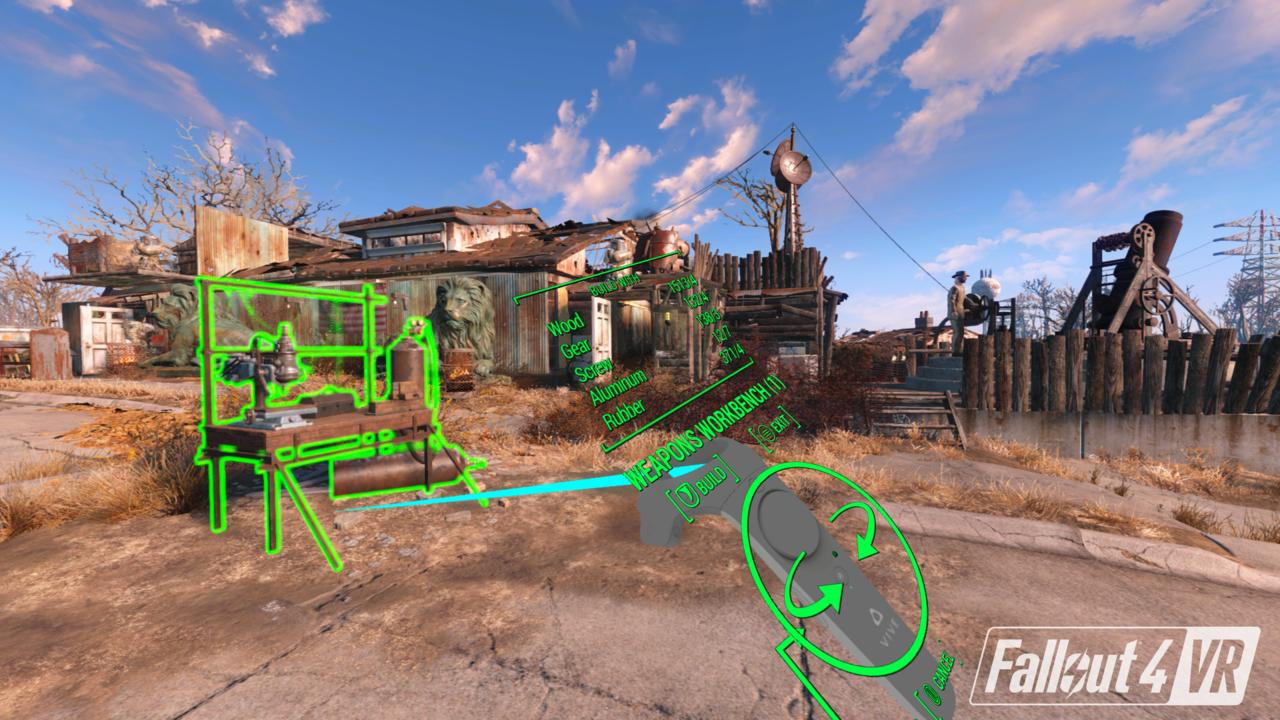Like Skyrim before it, Fallout 4 is an RPG that can last over 100 hours. In VR, that's a lot of standing, but just because the original version of this action RPG lent itself to long play periods doesn't mean it can't be appreciated in shorter sessions thanks to its abundance of bite-sized activities. From our five-hour initial glance, pursuits like touring Cambridge, completing quests, vaporizing mutants, and befriending rebels translates well to VR.
Currently an HTC Vive exclusive, Bethesda Game Studios has substantially adapted much of Fallout 4's controls to the VR platform's dual wands and head-tracking capabilities. The result is a port that invites you to revisit the ruins of New England through a more immersive point of view. And while ranged combat is a notable shortcoming, Fallout 4's wealth of other attack options allow you to easily bypass this hurdle.

Fallout 4 VR is Fallout 4 in its entirety, albeit with a new control scheme. That means you can still make the long trek to the irradiated Crater of Atom and puzzle over the Freedom Trail mission. You will need to earn your way to these landmarks though, since you can't use your old Fallout 4 save files and the accompanying fast travel options you've previously unlocked.
You're afforded the option of direct movement or short-distance teleportation, the latter being a solution for folks who suffer from motion sickness. Even if you've teleported in dozens of other first-person VR games, this type of movement takes some getting used to since your Action Points prevents you from cheating your way out of every dicey situation. As the attack sirens blare in the distance during the opening hour and you transition from suburbia to Vault 111, you can stretch your virtual legs, explore the cul-de-sac and chat with your frightened neighbors. Once you've committed to the vault, there's a palpable sense of immersion as you look up at the cylindrical shaft while the elevator descends, and the world as you know it disappears before your eyes. Such scenes reaffirm that moving your head to take in your surroundings can be more enveloping than moving a thumbstick and looking at a TV.
The Vault proves to be a valuable testing ground for environmental interactions. For instance, you have to face down to attack low-crawling cockroaches and you're saved the hassle of bending down to make contact. When you're not smashing radioactive bugs in your temporary home, you can comfortably test both direct movement or teleportation by going from room to room, and over short obstacles. Like the rest of Fallout 4 VR's objects, it's easy to have a newfound appreciation for many of the detailed 3D models, like the tight confines of your cryo pod. Same goes for the terminals, which are easy to use with the Vive wand, even though a part of you will wish that you could interact with these computers' keyboards.

Of course, the gift for making your way out of the Vault is the Pip-Boy, the personal computer strapped to your left arm in the game. You can now raise your actual arm and look down on a virtual Pip-Boy. Little details like the curvature of the screen and the dangling wire in the back enhances an already immersive experience. While a VR Pip-Boy with working dials is a pipe dream, Bethesda focused on simulating the touch-screen interface and mostly succeeded. From examining stats to highlighting gear, scrolling through and selecting options feels natural. The only time menus cut away to full screen is when you're upgrading S.P.E.C.I.A.L traits, which makes sense given that its color and detail would be at odds with the monochromatic charm of the Pip-Boy's screen.
Complementary to the Pip-Boy's interface are the virtual menus of the Settlements, which you unlock about two hours into your playthrough. Scrolling through craftable objects is a breeze as is pointing where you want to place them. It's mildly amusing that this 3D interface floats in mid-air as if it were in-game advanced holographic technology, but it's easy to play along as it serves to improve an already well-designed crafting UI. After getting past a mild learning curve, building a covered structure with a handful of beds took less than 10 minutes--a reasonable time when you include disassembling and scavenging.

Fallout 4 VR's combat is functional but you might have to adjust your play style depending on your preferred tactics. While the satisfaction of smacking contaminated flies never gets old, ranged gunplay is surprisingly frustrating. Even after tooling with aim sensitivity settings, it's a challenge trying to make precise shots. This makes reliance on the Vault-Tec Assisted Targeting System even more of a necessity than in the original version. Instead of aiming with a directional pad, you're manually pointing with the right-handed wand at your body part of choice. While you have to contend with the same sensitivity that you would through manual aiming, the slowdown ability of V.A.T.S. makes a world of difference. And in those rare instances where you're out of Action Points, large spread weapons like shotguns and miniguns are helpful in a pinch.
Fallout 4 VR is at its most inviting when you're seeing rather than doing. When you emerge from Vault 111, you can appreciate the expansiveness of the sky. Nighttime is, laughably, less convincing; the stars actually appear lower than the clouds. Still, the joy of looking up, whether to marvel at the moon or an ancient traffic light never gets old. The same goes for viewing detailed 3D objects up close, starting with Cogsworth. There's an impulse to bend down and crane your head as you admire his spherical frame and intricate limbs. When you meet Preston Garvey, you can't help but stare at the transparent chamber of his laser musket.
It's immersion-enhancing details like these that make Fallout 4 VR at least worth trying out--Steam's return policy affords you a two-hour test run. Whether you've seen one or all four of Fallout 4's endings, Bethesda's post-apocalyptic vision of Boston warrants a revisit in VR, marathon sessions optional.